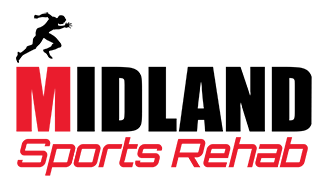In today’s fast-paced work environment, many of us spend long hours at our desks, which can lead to a range of work-related injuries and discomfort. Proper ergonomics is essential in preventing these workplace issues and creating a healthier, more productive workspace. Here are some key tips for setting up an ergonomic workspace and how physical therapy (PT) can help address work-related injuries.

Adjust Your Chair
Your chair plays a crucial role in your overall comfort and posture. Here’s how to adjust it correctly:
- Height: Your feet should be flat on the floor with your knees at a 90-degree angle. If your feet don’t touch the ground, use a footrest.
- Back Support: Adjust the backrest so it supports the natural curve of your lower back. Lumbar support can help prevent lower back pain.
- Armrests: Set your armrests so your elbows are close to your body and your shoulders are relaxed. Your forearms should be parallel to the ground or slightly declined.
Optimize Your Desk and Monitor Setup at Your Workplace
- Desk Height: Your desk should be at a height where your elbows are at a 90-degree angle when typing.
- Monitor Position: Position your monitor directly in front of you, with the top of the screen at or just below eye level. This helps to avoid neck strain from looking up or down.
Keyboard and Mouse Placement
- Keyboard: Keep your keyboard close enough so your elbows remain at a 90-degree angle. Your wrists should be straight while typing.
- Mouse: Place your mouse at the same level as your keyboard, close enough that you don’t have to reach or stretch.
Take Breaks
- Stand and Move: Stand up, stretch, and walk around. This helps to reduce muscle fatigue and improve circulation.
- Stretching: Incorporate stretches for your neck, shoulders, wrists, and back into your daily routine. Simple stretches can help alleviate tension and prevent discomfort.
Create an Ergonomic Work Routine
- Adjustable Workstation: If possible, use a sit-stand desk to alternate between sitting and standing. This can reduce the risks associated with prolonged sitting.
- Monitor Placement: Use a monitor stand or an adjustable arm to keep your screen at the proper height and distance.
How Physical Therapy Can Help with Workplace Injuries
Even with the best ergonomic practices, work-related injuries can still occur. Physical therapy can play a vital role in addressing these issues and improving overall comfort:
- Assessment and Treatment: A physical therapist can assess your workstation setup and suggest modifications to improve ergonomics. They can also provide treatments for musculoskeletal issues, such as back pain or carpal tunnel syndrome.
- Rehabilitation Exercises: PT can include exercises designed to strengthen muscles, improve posture, and increase flexibility. These exercises can help to prevent and recover from injuries.
- Education and Prevention: Physical therapists educate patients on proper body mechanics and ergonomics to prevent future injuries. They can provide guidance on correct lifting techniques and safe work practices.

Physical Therapy at Midland and Freeland Sports Rehab
Creating and ergonomic workspace is essential for maintaining a healthy work environment and preventing discomfort and injuries. At Midland and Freeland Sports Rehab, we understand that your workspace setup can greatly impact your physical well-being. By following our tips for chair adjustments, desk setup, and incorporating breaks, you can enhance your comfort and productivity. If you find yourself dealing with work-related pain or injuries, our physical therapy services are here to offer valuable support and tailored treatment to help you recover and return to feeling your best. Remember, making a few adjustments to your workspace and work habits can lead to significant improvements in your overall well-being.


